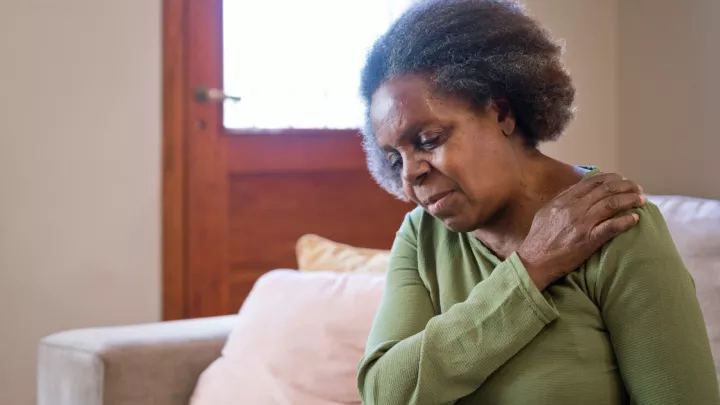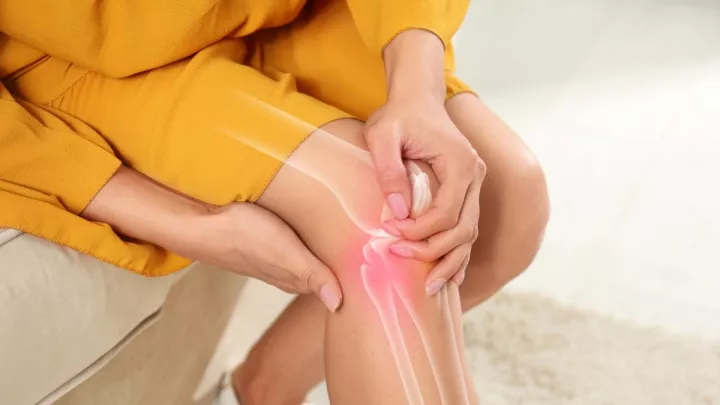Osteoarthritis symptoms: What are they and when to seek help

Osteoarthritis can be a real pain. Nearly 54 million adults in the United States have some form of arthritis. Relieving the aches and pains is a challenge that most people will deal with in their lifetime.
“People are living much longer and pursuing much more active lifestyles these days,” says Nebraska Medicine orthopaedic surgeon Beau Kildow, MD. “More and more patients are diagnosed with osteoarthritis, and it’s becoming a common condition. People want to keep pursuing an active lifestyle and don’t want the pain to keep them down.”
Osteoarthritis symptoms and where it can occur
The most common areas affected by osteoarthritis are the hips and knees due to arthritis results from the joints bearing weight and withstanding force when active. The cartilage breaks down, causing friction and ultimately damaging the bone. However, osteoarthritis can occur in any joint, including shoulders, ankles, knuckles, spine and other areas.
If you have certain risk factors, you may be more prone to developing osteoarthritis. Although osteoarthritis doesn’t “spread,” if you are prone to arthritis in one joint, you are prone to arthritis in other joints as well.
Common osteoarthritis symptoms may include:
- Pain that persists with activity and may continue to throb after activity. Pain may occur on and off at first but will continue to progress
- Joint instability, weakness or stiffness after inactivity
- Deep groin pain may signal arthritis in the hip
- In the early stages, pain can feel sharp or sudden
- Swelling or fluid retention around the joint
- Fatigue
- A change in gait or the way you walk
- Radiating pain to other joints
Why does osteoarthritis hurt so much?
“Arthritis pain is largely due to mechanical reasons resulting from bone-on-bone friction,” explains Dr. Kildow. “It also causes substantial inflammation due to the grinding down of protective cartilage. Joint nerves are sensitive to this inflammation and send significant pain signals.”
Which is worse – osteoarthritis or osteoporosis?
Osteoarthritis can develop when the cartilage within and between the joint breaks down, resulting in the loss of cartilage, which can cause significant pain due to bone-on-bone friction. Osteoporosis is different, as it’s the quality or density of your overall bone structure. Osteoarthritis and osteoporosis can, however, go hand in hand due to worn-out joints and decreased bone quality that comes with aging.
There is no cure or reversal for osteoarthritis, but you have options
The best way to keep your joints healthy and prolong the osteoarthritis progression is to stay healthy and active. Building muscle strength will help take the force and load off the joints. Maintain a healthy weight to reduce stress on the joints. At-home treatments like supplements, anti-inflammatory drugs, application of heat or cold and other therapeutic methods may help relieve symptoms in the short term.
The good news? Although osteoarthritis is not reversible, there are various options to treat and manage it.
When should I see a doctor for joint pain?
- If you have an acute injury and are experiencing pain
- If the pain is nagging and you have flare-ups occasionally, but you’re trying to manage it at home without much relief, talk with your doctor about it. Especially pay attention if the pain is deep and achy and persists over time
- If there’s a change in your daily activities due to persistent pain
“Don’t be afraid to seek help and treatment,” says Dr. Kildow. “If you have osteoarthritis symptoms, get established with a physician to find out treatment options now and get a projection of what things may look like in the future. We have better treatment options now, from medications and injections to joint replacement surgery, that are very successful. Patients are often relieved to hear that joint replacement surgery is much more effective and long-lasting than in previous years.”
Don’t let osteoarthritis pain keep you from staying active. Make an appointment for an evaluation. Call 800-922-0000.







